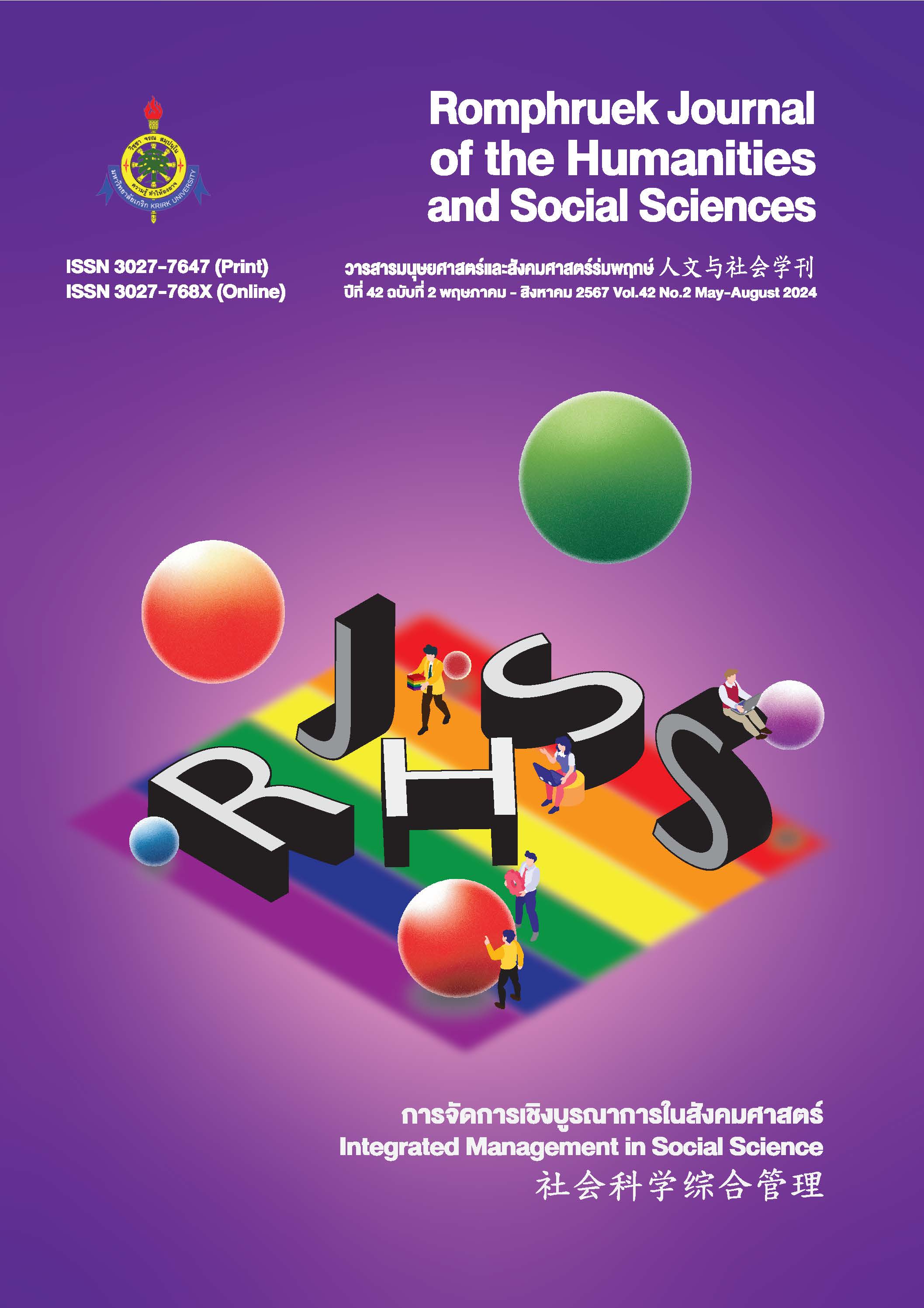A Development Model of Service Marketing Mix Expectations Affecting Technology Acceptance on Purchase Intent and Purchasing Decision Through Social Media of the Students of Generation Z in Bangkok Metropolitan Region
Main Article Content
Abstract
This research aims to 1) examine the service marketing mix expectation factors affecting technology acceptance on purchase intent and purchase decisions through social media of the generation Z students in the Bangkok metropolitan region. 2) develop the model of service marketing mix expectation affecting technology acceptance on purchase intent and purchase decisions through social media of the Generation Z students in the Bangkok metropolitan region. The population were undergraduate students from universities in the Bangkok metropolitan region. The sample consisted of 1,504 undergraduate students studying in the fields of science, humanities and engineering drawn by multistage random sampling. The research tool was the questionnaire (rating scale). The baseline data were analyzed using descriptive statistics, straightforward analysis structure by confirmatory component analysis, and the quality of precision instrument was analyzed using Cronbach's alpha coefficient.
The results indicated that three latent variables—service marketing mix expectation, technology acceptability, and social media purchase decisions—affected the relationship between the service marketing mix expectation model and technology acceptance and decision-making. The latent variables were valid in the range of .842 - .897. According to the tool quality for structural validity by confirmatory factor analysis, It was found that the developed service marketing mix expectation model influencing technology acceptance on purchase intent and purchase decisions through social media developed was consistent with the empirical data, with chi-square= 48.13, df= 33, p=0.043, GFI=1.00, AGFI=0.98, RMR=0.0058, RMSEA=0.017.
Article Details

This work is licensed under a Creative Commons Attribution-NonCommercial-NoDerivatives 4.0 International License.
Every article published in the Romphruek Journal of the Humanities and Social Sciences is the opinion and point of view of the authors. Thery're not the viewpoint of Krirk University or the editored department. Any part or all of the articles for pablication must be clearly cited.
References
ณิชาภา เทพณรงค์ และ ประภัสสร วิเศษประภา. (2564). ปัจจัยส่วนประสมทางการตลาดออนไลน์ที่มีผลต่อการตัดสินใจซื้อสินค้าออนไลน์ผ่านแอปพลิเคชันของผู้บริโภคในเขตกรุงเทพมหานคร (การค้นคว้าอิสระ ปริญญามหาบัณฑิต ไม่ได้ตีพิมพ์). มหาวิทยาลัยรามคำแหง.
ภัศรา อุทธา. (2558). ความคาดหวังและความพึงพอใจในกระบวนการจัดการด้านลูกค้าสัมพันธ์ของบุคลากรในสถานพยาบาลต่อผู้แทนขายเวชภัณฑ์ในเขตกรุงเทพมหานคร (การค้นคว้าอิสระ ปริญญามหาบัณฑิต ไม่ได้ตีพิมพ์). มหาวิทยาลัยธรรมศาสตร์.
Alfadda, H. A., & Mahdi, H. S. (2021). Measuring Students’ Use of Zoom Application in Language Course Based on the Technology Acceptance Model (TAM). Journal of Psycholinguist Research, 50(2021), 883–900. https://doi.org/10.1007/s10936-020-09752-1
Armstrong, G. & Kotler, P. (2009). Marketing an introduction (9th ed.). Pearson Prentice Hall.
Boone, L. E., & Kurtz, D. L. (2015). Contemporary marketing (17th ed.). Cengage Learning.
Digital Government Development Agency. (2021, June 1). Statistics of current students in higher education Institutions classified by educational level and gender.
https://data.go.th/dataset/univ_std_11_01
Do, N. T. T. (2021). Factors leading to online purchase intentions: customized gifts industry in Denmark. ABAC Journal, 41(1), 100-120.
ETDA (2022, August 23). Report of the survey results of internet users in Thailand in 2022 (Thailand Internet User Behavior 2022). Electronic Transactions Development Agency. https://www.etda.or.th/th/pr-news/iub2022.aspx.
Hair, J., Black, W., Babin, B. & Anderson R. (2010). Multivariate data analysis a global perspective. Hamilton Printing Co.
Hart, O. A., Nwibere, B. M., & Inyang, B. J. (2015). The Uptake of Electronic Commerce by SMEs: A Meta the Retical Framework Expanding the Determining Constructs of TAM and TOE Frameworks. Journal of Global Business Technology, 6(1), 1-27.
Internet World Stats. (2022, July 31). Internet 2022 Usage in Asia. https://www.internetworldstats. com/stats3.htm.
Nongyai, P., & Wiroonrath, S. (2019). Guidelines for using marketing mix and social media marketing of small online businesses: a case study of fashion products in the EEC region. Journal of Global Business Review, 21(2), 23-39.
Ooi, K. B., & Tan, G. W. H. (2016). Mobile Technology Acceptance Model: An Investigation Using Mobile Users to Explore Smartphone Credit Card. Expert Systems with Applications, 59(3), 33-46. https://doi.org/10.1016/j.eswa.2016.04.015
Phothikitti, K. (2021). Factors Impacting on Online Purchasing Behavior toward Consumers in Bangkok, Thailand. AU-GSB E-JOURNAL, 13(2), 120-126.
Solomon, M. R. (2018). Consumer Behavior: Buying, Having, and Being (12th ed.). Pearson Educational.
Valentina Dencheva. (2022). Social media platforms used by marketers worldwide 2022. statista. https://www.statista.com/aboutus/our-research-commitment/3315/valentina-dencheva.
Unai E., & Uzun A. M. (2020). Understanding university students’ behavioral intention to use Edmodo through the lens of an extended technology acceptance model. British Journal of Educational Technology, 52(2), 619-637. https://doi.org/10.1111/bjet.13046.


